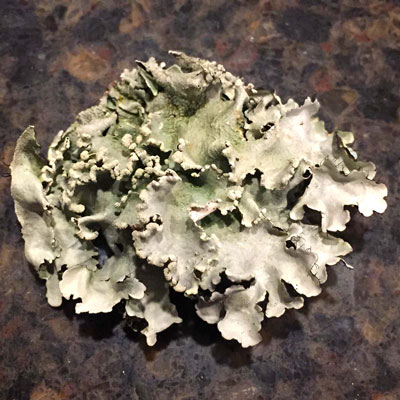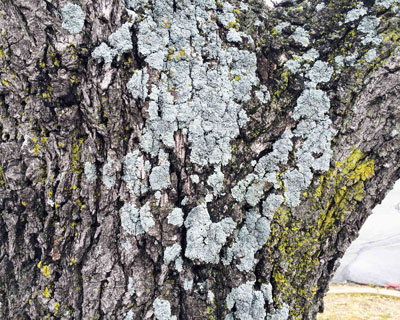Question of the Week Number 2: January 18, 2018
“Neil, this fell out of my pecan tree in all the wind these past few days. What is it, and is it of any concern?”

Photo: Lichen fell from a pecan limb a few days ago and alarmed this e-gardens reader.
What are lichens?
Lichens consist of two distinctly different types of life organisms, algae and funguses, growing together and nourishing one another. They receive nothing from the tree or shrub branches or trunk other than support. No moisture and no nutrition.

Photo: Lichens grow on tree’s trunk in Collin County, McKinney.
Lichens are most common on tree trunks that receive sunlight during the winter. That’s why you’ll see them on pecans and oaks while they’re bare, but you’ll also see them growing on landscaping boulders from the hot desert clear to the Arctic tundra. These things are real survivors.
I have a personal theory about why you see lichens most commonly on trees that have dying branches, and my theory does not imply in any way that the lichens caused the branches to die.
Here’s what I think. Bark is a dead tissue. That’s a known fact. It functions for protection of the tree’s internal tissues. As a tree grows larger, its trunk and branches expand until the dead bark pops off. Any lichens that have started to form pop off with it and fall to the ground.
However, when a branch is dying for some other reason (insects, diseases, over-crowding, injury, etc.), the bark isn’t really sloughed off and the lichens can grow larger and more noticeable. Eventually the branch breaks from its own weight and falls to the ground. It may look like the lichens killed it, but in reality, they did not.
So with lichens, there’s essentially no harm and no foul. Marvel at them, perhaps even brag about them. At least learn to enjoy them.
